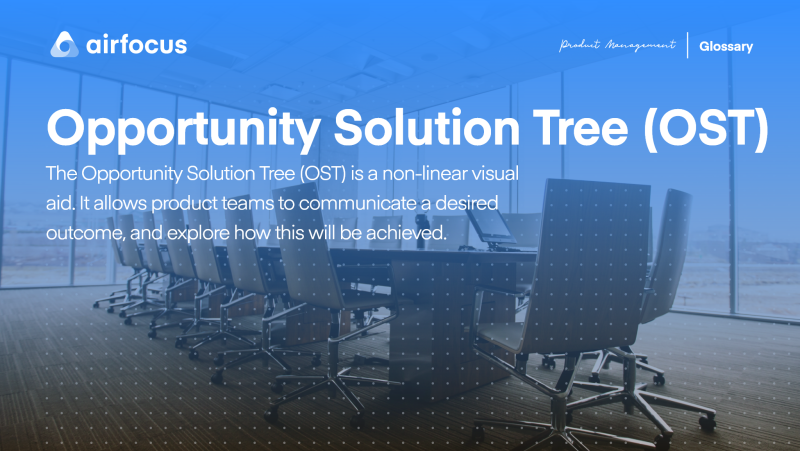Opportunity Solution Tree (OST)
What is an Opportunity Solution Tree (OST)?
Definition of an Opportunity Solution Tree
The Opportunity Solution Tree (OST) is a non-linear visual aid. It allows product teams to communicate the desired outcome, and explore how this will be achieved.
Using the OST model, product teams can also assess customer pain points throughout the development process, ensuring that the final product delivers maximum benefit to the customer.
Who created the Opportunity Solution Tree?
The Opportunity Solution Tree is a relatively recent idea. It was created in 2016, by-product discovery coach Teresa Torres. The concept of the OST came about as a means of challenging certain assumptions about the product discovery process.
How to use an Opportunity Solution Tree
The Opportunity Solution Tree diagram can be broken down into four key areas: Outcome, Opportunity, Solution, and Experiment.
Here’s a quick step-by-step guide, for building your own OST for product discovery:
1. The first step is to decide on your desired outcome. This could be any metric: increased revenue, more user signups, NSP ratings. Once decided, this single outcome sits at the very top of the tree.
2. From the desired outcome, you need to do a bit of customer research and identify the tasks or pain points that will need to be resolved in order to achieve it. These pain points are known as opportunities and make up the next level of your OST. You can include as many of these as you like.
3. Now it’s time to do some problem-solving. The next branch down is all about solutions. Working as a team, identify the ways your product might solve these customer pain points — again, adding as many as are required.
4. The bottom level of the OST is about experimentation. Combine your problems and solutions into actionable experiments — the outcomes of which you can assess to decide whether or not your main OST goal has been reached.

General FAQ

Glossary categories
Build great roadmaps

Experience the new way of doing product management







